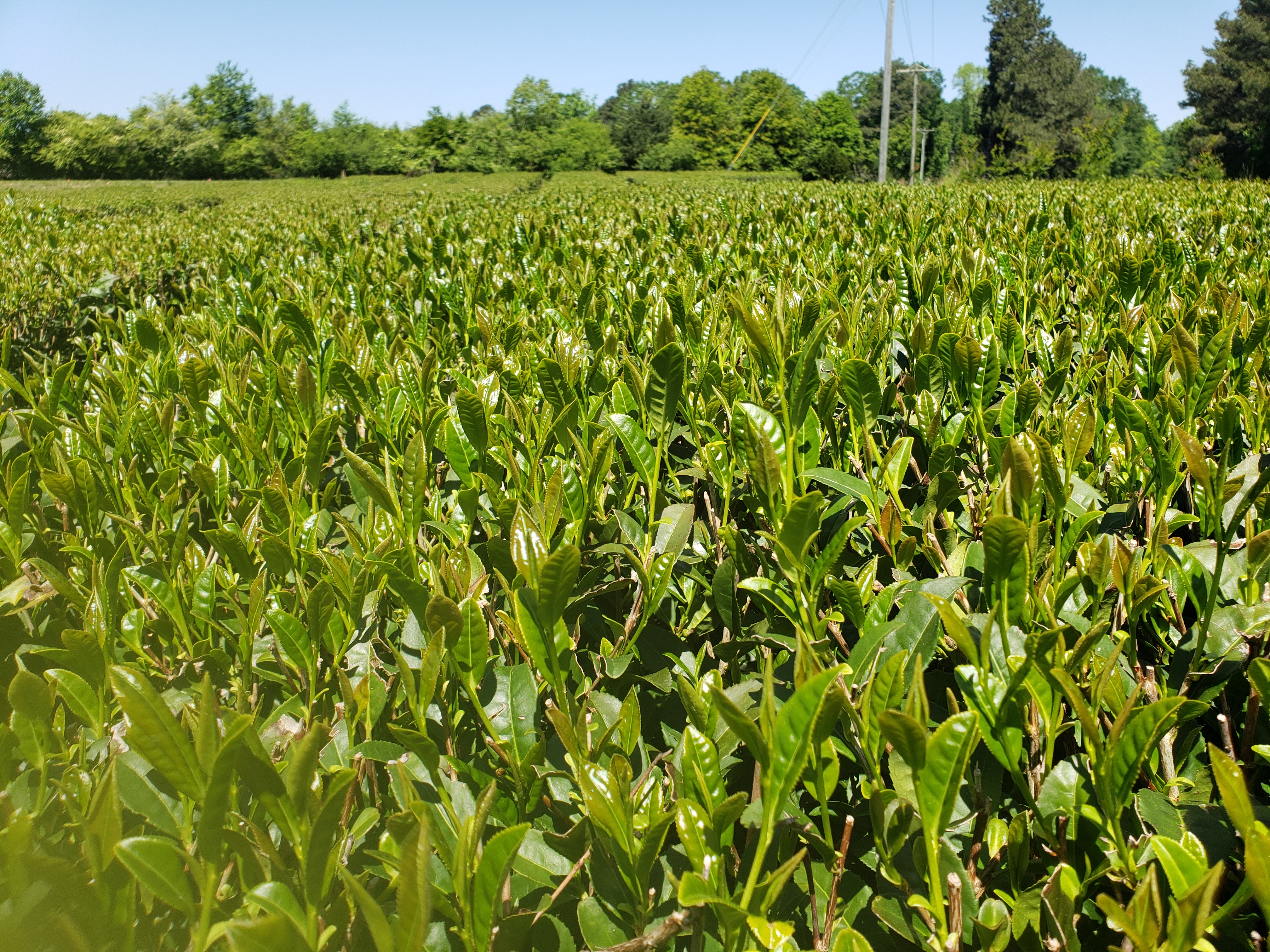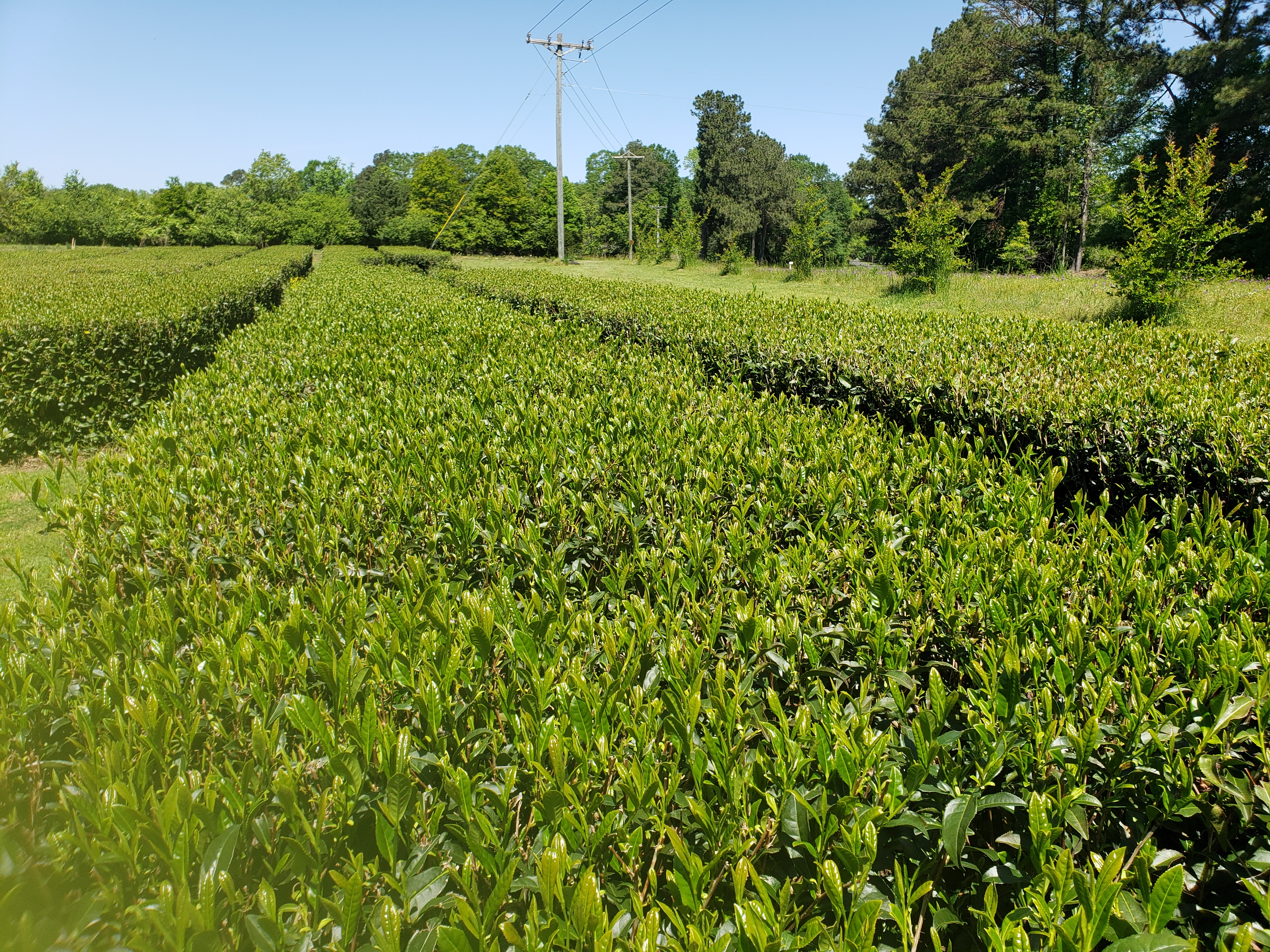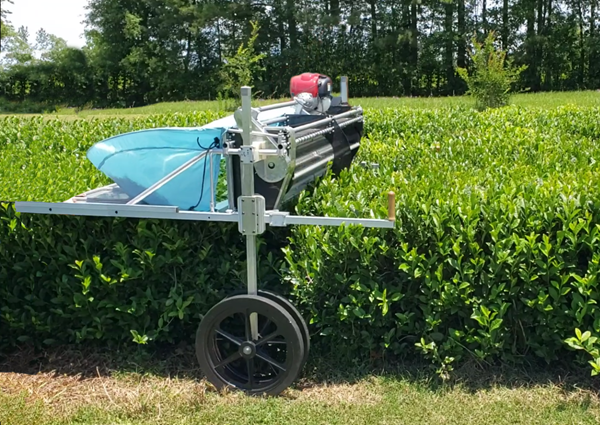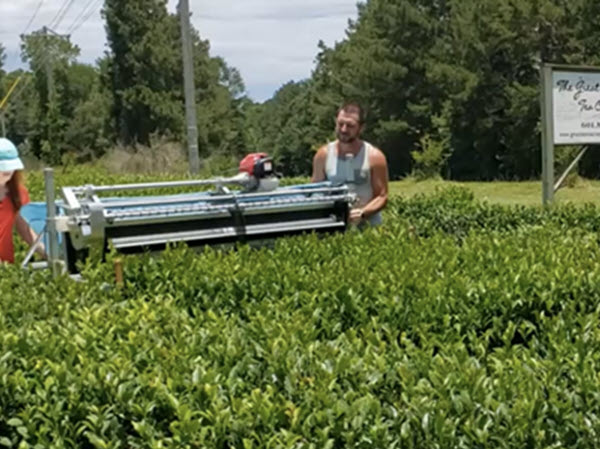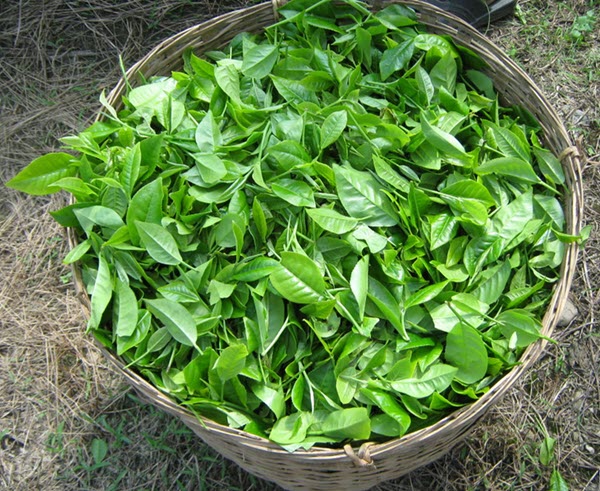Inspired by The Charleston Tea Garden in South Carolina, Jason McDonald decided to plant fields of tea amid the timber on his 289-acre farm in Lincoln County Mississippi where a combination of high heat, humidity, acidic soil, and ample rainfall is ideally suited to tea.
In 2012 McDonald planted a test plot and made his first tea in 2015. In 2018 the tea garden produced sufficient quantities to begin selling to the public. McDonald has since diligently researched every aspect of the industry, enlisting horticultural, sustainability, manufacturing, and machine professionals to develop harvesting and automated tea processing techniques and the utilization of equipment at small-scale operations.
“We are striving to modernize an ancient industry with innovation and bring it much closer to home,” he says. The Great Mississippi Tea Company is pioneering modern cultivation, tea science, employment standards, and small-scale mechanization of the harvest for producers in developed countries where the high cost of labor and land has discouraged growers.
- Caption: Gasoline-powered harvester “plucks” tea selectively, leaving immature shoots and sustenance leaves on the plucking table.
Hear the interview

The Economics of Small-Scale Mechanization
Great Mississippi Tea Company founder/CEO Jason McDonald discusses the economics of mechanical harvesting following a two-year trial of mechanized selective harvesting equipment. There are currently seven acres under tea at his garden with plans to expand to 14 acres. McDonald reports that hand plucking, at $15 per hour costs $43.81 per pound, about $96 per kilo. Using a selective two-person harvester McDonald increased yield and lowered the cost per pound to $6.14, about $13.50 per kilo. McDonald has generously agreed to share his harvest data, labor and production costs. See links below to download.
Dan Bolton: Can specialty tea growers who focus on quality over quantity rely on mechanical harvesters to deliver leaves suitable for making high-value tea?
Jason McDonald: Well, I think they can. But we’re going to have to rethink the idea of quality. Commodity leaf can be anything from dust to fanning’s to broken leaf, and then you’ve got the really high end, you know, one leaf, one bud that’s going to command higher prices. I think that the economics are going to favor our specialty mid-grade teas. Those are the ones that pay the bills, and that type of market is really suited for selective harvesters. I think that a selective harvester would be wasted on a CTC (cut, tear, curl) plantation, it also would be wasted attempting to achieve the precision of hand plucking in China. But for the rest of the mid-level specialty teas the specialized selective harvester has worked wonders for us and kept quality up. We recently entered the Australian Tea Masters Golden Leaf Awards and two of the teas that we produced using the Williames harvester scored high enough for a gold medal.
Our yellow tea was the overall winner for yellow tea, which means that in a blind tasting we scored over 90%. In the hands of a skilled processor who is able to adapt, quality can actually increase and the harvester can also bring the cost of producing the tea down so that it’s affordable for more people.
Dan: During the past two years, you’ve conducted field trials with a selective mechanical harvester to produce 250 to 350 kilos of made tea. Will you share with listeners what you have discovered?
Jason: When we were doing hand plucking, we were on a seven-day rotation and we just couldn’t keep up. It wasn’t about hiring enough people or paying people. We could make it economically feasible to hire people — but when it gets to 110 degrees Fahrenheit in our field in the summer, people just don’t show up, so we were losing yield. We were only getting about 100 pounds of the raw leaf by hand plucking (about 45 kilos a year).
After using the machine the first year we had almost a 500% increase, and then we had another about 150% increase in year two.
Our yield blew up because we could keep ahead of the bushes growing. Labor availability plays into the equation too, in an area where you can’t get labor into the fields, a machine with two people using it increased our yield 500%.
After using the machine the first year we had almost a 500% increase, and then we had another about 150% increase in year two. Our yield blew up because we could keep ahead of the bushes growing.
– Jason McDonald
Dan: Will you compare for listeners the cost of manual harvest compared to the cost of operating mechanical harvesters and how it affects your final pricing? I’m curious not only about the cost of harvesting but to prune and skiff, feed, and maintain the seven acres current under tea. Ultimately, what wholesale/retail price is required to recover that expense?
Jason: It cost roughly $43.81 pound, just for plucking which is about $96 a kilo. Generally, there’s about another $25 to $30 per pound cost for labor in the field. So you’re looking at about $75 a pound or $165 a kilo, just to be able to produce our tea if you’re doing handmade.
Our retail price is generally between $180 and $240 a pound. So that’s about $396 a kilo, at retail.
Wholesale is about 30% less. We’re moving everything we can produce at this point through our retail market, so there’s really no incentive for us to wholesale it at these prices. Down the line, when we have lots more coming in, we’re gonna have to figure out wholesale.
So breakeven is $86 a pound, ($199 a kilo) doing it by hand. You can make money off that even if you’ve only got five or 10 kilos, I guess. But do you really want to spend day-in and day-out working at something that will possibly make $2,000 or $3,000 a year?
The Williames Selective Tea Plucker allowed us to reduce the cost of plucking from $43.81 pound to $6.14 a pound, that’s roughly $13.50 per kilo.
All you would need to do is make 400 pounds of tea a year and that would cover the cost of the machine which is about $15,000. So, if you’re producing 400 pounds of tea you’ve got a machine paid for, and the machine doesn’t quit working at that time.
There’s also the cost of running it, but I think we used less than a gallon of gas the entire summer and you still have to pay someone to walk with the machine. In the US we pay $15 an hour which is a living wage, it’s actually twice the minimum wage in the United States.
When you’re hand plucking, you’re sorting in the field but with machine harvesting, you’ve got the cost of running the machine, and then you’ve got the cost of sorting tea in the factory.
There are pieces that are either too small or too large, and you’d have to sort that out. Sorting required an additional 40 minutes of labor to process 10 kilos but that helps in our situation because when it’s really hot outside people would rather be indoors in the air conditioning sorting than sorting in the field.
I’m talking to investors now about a fully automated whole leaf black tea processing line out of China that’s all run off of an iPad.
Automating the whole thing to create a wholesale line of black tea could further reduce the cost down to almost $7 a pound for us here in the United States.
Dan: And what kind of volume would you have?
Jason: If you wanted to run 24 hours a day, it would be 50 kilos a day. That’s enough capacity to take care of our eventual 14 acres.
We have to do this. If you can make a profit here with the labor cost and energy costs, and the level of regulation in the United States, you should be able to do it anywhere in the world.

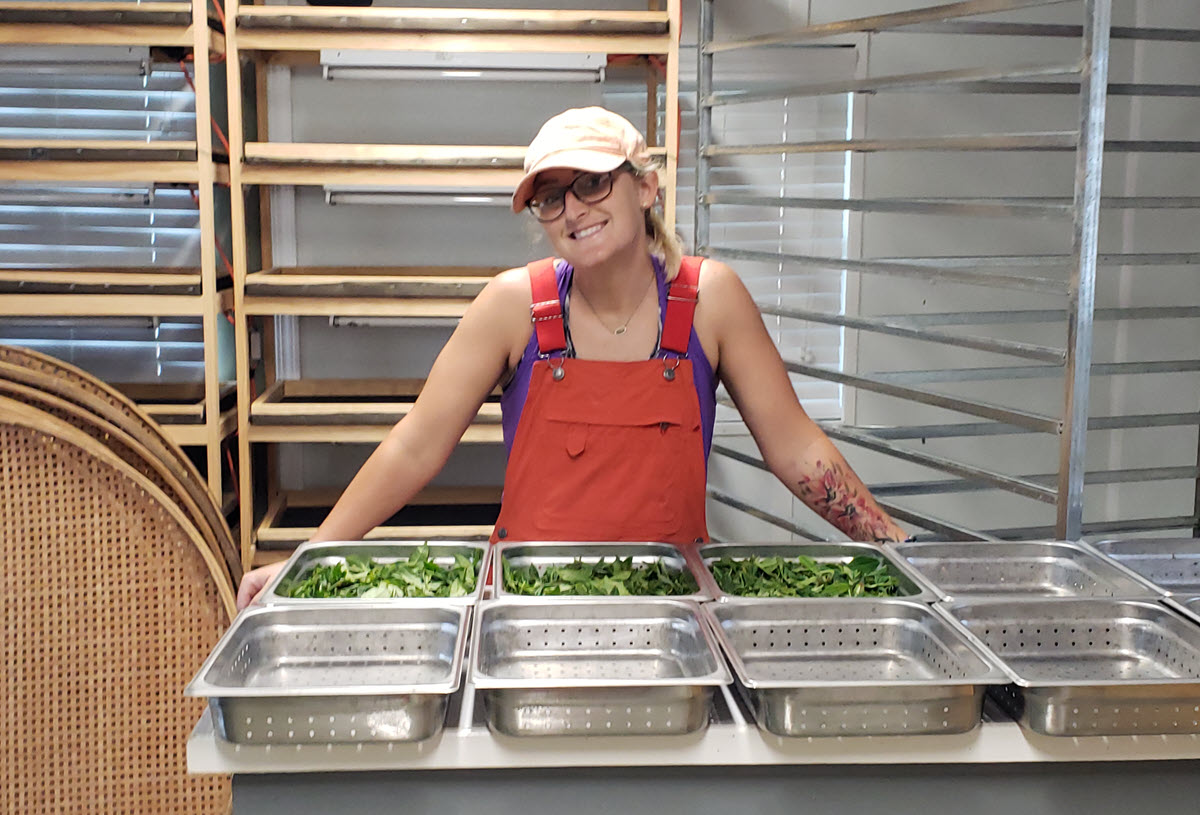
Download Link
- Cost Comparison Slide
- Harvester Data Worksheet
Link to share this post with your colleagues
Signup and receive Tea Biz weekly in your inbox.
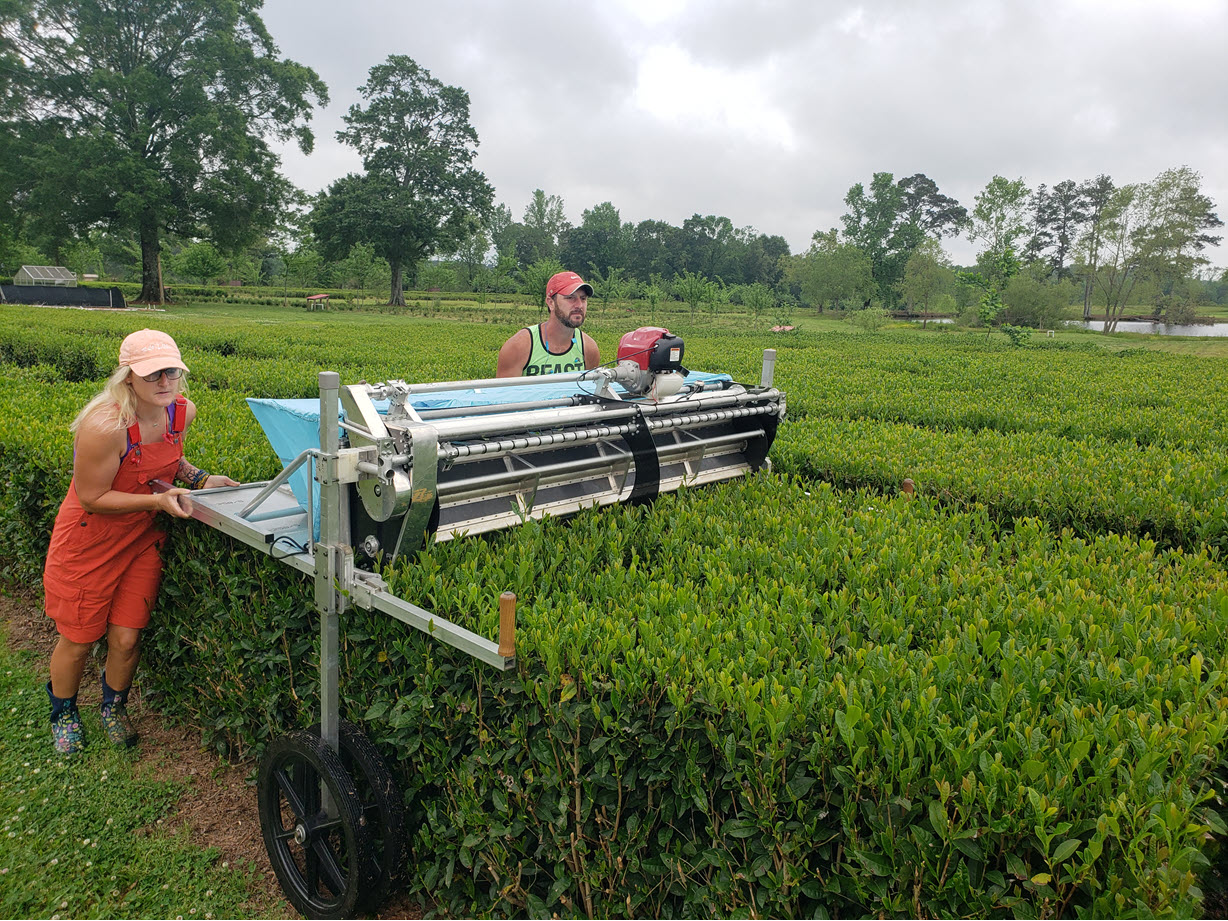
Never miss an episode
Subscribe wherever you enjoy podcasts:

